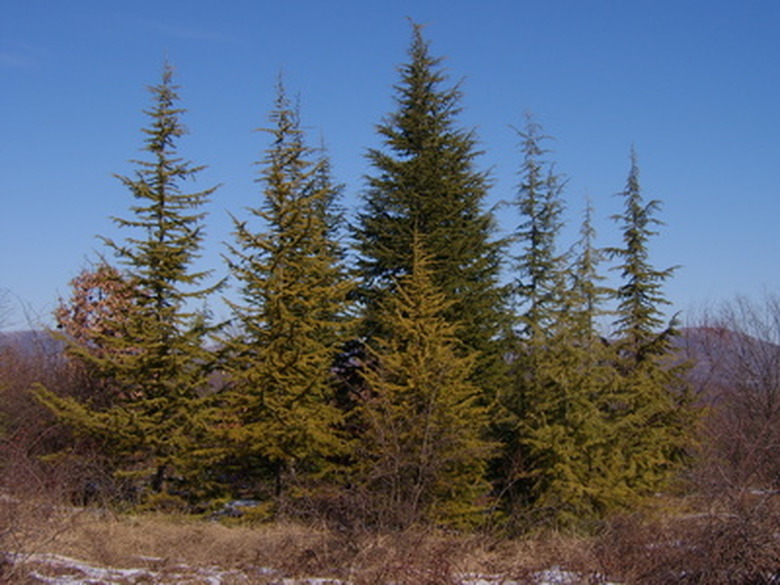How To Trim Pine Trees
Pine trees thrive throughout the United States. Some species of pine trees grow exclusively in the northern parts of the United States, while others need the warmer temperatures of the southern United States. Neglect or improper treatment of pine trees causes them to become unsightly and sickly. While pine trees normally do not need pruning, trim pine trees occasionally as part of a regular tree maintenance program.
Step 1
Prune off all dead, diseased and damaged limbs with your pruning saw. These limbs are of no benefit to the tree any longer and can cause damage to the tree and nearby structures.
Step 2
Prune the new central leader, or "candle" of the pine tree with your pruning shears. The central leader is the vertical branch that grows straight up off the top of the pine tree. Cut it back to a 8- to 14-inch long stub.
- Pine trees thrive throughout the United States.
- These limbs are of no benefit to the tree any longer and can cause damage to the tree and nearby structures.
Step 3
Prune the side branches around the central leader. These should be pruned 4 to 6 inches shorter than the central leader.
Step 4
Prune down the rest of the pine tree. Each branch should be pruned longer than the one above it to form a uniform pyramid shape in the pine tree.
Pine Trees
They raise their branches to the sky in fields, front yards and other sun-soaked places around the world. They require little water and well-drained, preferably sandy soil. They can live well over 100 years, and some have even been found that are thousands of years old, such as the bristlecone pine that thrives in Nevada's Great Basin National Park. The branches of the pine tree grow laterally from a straight trunk that's covered in bark. Some pine tree species produce just one whorl of distinct branches a year that butts against the tip of the new shoot. The woody plants that become the towering trees that populate cities, forests and national parks across the country are beneficial to the environment as well as commerce. Pine parts are also used for the manufacturing of substances such as pulp and paper, rosin and the cleaning agent turpentine.
- Prune the side branches around the central leader.
- Each branch should be pruned longer than the one above it to form a uniform pyramid shape in the pine tree.
Things Needed
- Pruning saw
- Pruning shears
- Step ladder
Warning
Do not top pine trees. Topping–when you cut all branches of a pine tree off above a certain height–exposes the tree to disease, decay and damaging insects. Avoid pruning pine trees in wet weather. This allows disease to penetrate into the pine tree. Dry summer weather is the ideal time to prune pine trees.
Tip
Prune the bottom branches off of large pine trees to allow access around the tree. You can successfully prune up to one-third of the crown of large pine trees without compromising the health of the tree.
